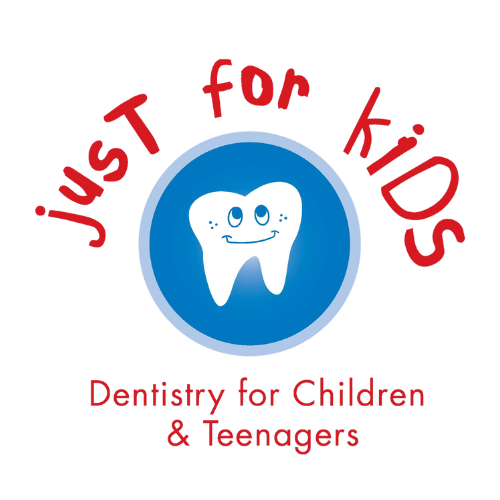Just For Kids 601 Main Street, Suite #220 Keller, TX 76248 (817) 741-8390 [email protected]

Our FAQ
Frequently Asked Questions?
In the same way that pediatricians are trained to meet a child’s medical needs, our pediatric dental specialists are uniquely qualified to protect your child’s oral health, using the most advanced techniques…and all in our delightfully friendly open treatment area. Pediatric dentists have an additional 2-3 years of training at university pediatric facilities in addition to 4 years of dental school and 4 years of college study. Pediatric dentists learn how to deal with the behavioral aspects of children, how to make them feel comfortable, and to make the experience as pleasant as possible. Also, they are trained and qualified to treat special needs patients.
What dental problem could my child have?
Some dental problems begin very early in life. One concern is baby bottle tooth decay, a serious condition caused by a child staying on the bottle (or breast) too long. Another problem is gum disease. About 40% of children 2-3 years old have at least mild inflammation of gum tissues. Oral habits (such as thumb-sucking) should also be checked. The earlier the dental visit, the better the chances of preventing problems. Strong, healthy teeth help your child chew food easily, speak clearly and feel good about his or her appearance.
Why are baby teeth so important?
Primary teeth are important because they help with proper chewing and eating, help in speech development and add to an attractive appearance. A child who can chew easily, speak clearly and smile confidently is a happier child. Healthy primary teeth allow normal development of the jaw bones and muscles, save space for the permanent teeth and guide them into place. If a baby tooth is lost too soon, permanent teeth may come in crooked. Decayed baby teeth can cause pain, abscesses or infections, and can spread to the permanent teeth. Also, your child’s general health can be affected if diseased baby teeth aren’t treated. Remember, some primary molars are not replaced until age 10-14, so they must last for years.
What about preventive care?
Tooth decay and children no longer have to go hand in hand. At our office we are most concerned with all aspects of preventive care. We use the latest in sealant technology to protect your child’s teeth. Sealants are space-age plastics that are bonded to the chewing surfaces of decay-prone back teeth. This is just one of the ways we will set the foundation for your child’s lifetime of good oral health. See our preventive care tips.
Nitrous oxide/oxygen analgesia
Many children are given nitrous oxide/oxygen to relax them during dental treatment. This is commonly known as “laughing gas”. These two gases are delivered to the patient through a hose attached to a nasal hood that sits on the nose so the child can breathe normally. This will help your child to relax and feel calmer during dental treatment without putting them to sleep. The American Academy of Pediatric Dentistry recognizes this technique for use in pediatric dentistry. As the gases are easily eliminated from the body, before your child hops out of the dental chair the effects are gone.
Conscious Sedation
We will likely recommend this technique if your child is extremely apprehensive about upcoming dental treatment. It is also used for very young children and those with special needs. Conscious sedation involves taking a small pill or swallowing a drink of medication (we can add flavoring to the drink). There are various medications that can be used. We will go over exactly what drugs we plan to use and answer all questions that you may have. This technique usually makes your child quite drowsy and may even fall asleep. It is not intended to make your child unconscious.
IV Sedation
IV sedation is used for extremely apprehensive children, special needs children and with children who need an extensive amount of dental care. Very often the conscious sedation technique is not quite enough to help the patient relax to and be calm so that the dental treatment can be performed safely. In these cases, we work with an anesthesiologist who comes to our office and Dr. Hoffman treats the child in the office while the anesthesiologist administers the medications and monitors the patient throughout the case.
Hospital Dentistry
In some cases, there are reasons that IV sedation would not be recommended for your child to obtain dental care. Should that be the case, Dr. Hoffman will recommend a qualified pediatric dentist who has hospital privileges. For many years Dr. Hoffman did hospital cases but as it requires a great deal amount of time away from the office, he no longer does hospital dentistry.
Interceptive orthodontics or early orthodontics may be recommended to correct certain dental malocclusions that develop early. Crossbites, narrow dental arches, issues created by habits such as thumb or pacifier use, overbites and underbites are some of the conditions that may benefit from interceptive orthodontics. In addition, early interceptive orthodontics may help avoid the removal of permanent teeth in the final phase of orthodontic treatment.
Parents should be aware that interceptive care is usually an early phase of full orthodontics that may be needed in the future. Interceptive care can help make further orthodontic care less involved requiring less treatment time. In some cases it could help avoid any further orthodontic care.
Some examples of interceptive orthodontics are expansion of the upper jaw to correct a crossbite, early removal of baby teeth to facilitate the proper eruption of the permanent teeth, maintaining space for permanent teeth after a premature loss of a baby tooth, and reducing protrusion of upper front teeth to decrease the likelihood of fracture from trauma.
Orthodontic Treatment Timing
Our doctor provides orthodontic treatment for adolescents and children depending on the severity of the malocclusion. In many cases our office will refer you to a qualified orthodontist who will work with us in caring for your child. We follow the guidelines established by the American Association of Orthodontists by recommending that an orthodontic evaluation take place at an appropriate age. This evaluation can help to determine the best time to begin any necessary treatment.
Many progressive treatments are now available for patients 7 to 11 years of age, which provide significant benefits, especially when jaw irregularities are present. These treatments may also prevent certain conditions from worsening. Treating children with these types of problems during their growth stages allows our practices to achieve results that may not be possible when face and jaw bones have fully developed. This early treatment can simplify or eliminate additional treatment for the child.
Silver Diamine Fluoride
Silver Diamine Fluoride (SDF) has been approved as a tool in treating tooth decay. Our office utilizes this relatively new treatment modality when patient cooperation is limited. While SDF does not restore form and function to teeth as a traditional restoration would, it is used as an interim therapy and part of a comprehensive plan. As with any treatment modality, there are some negative side effects. We will be happy to discuss this treatment with you.
Why are sealants necessary?
The back teeth have uneven pits and fissures that are difficult to keep clean because toothbrush bristles cannot reach into them. The pits and fissures hold plaque and food debris. Most tooth decay occurs in these hard to clean grooves. Sealants from a thin covering to keep out plaque and debris and decrease the risk of decay.
How are sealants applied?
It takes only a few minutes to seal each tooth. The procedure, which is virtually painless, rarely involves drilling or anesthesia. The teeth are cleaned and chewing surfaces are conditioned to help the sealant adhere to the tooth. The sealant is ” painted onto the chewing surface, whre it flows into the pits and fissures, bonds to the tooth and hardens. A special curing light may be used to help the sealant harden.
How long do sealants last?
As long as the resin remains intact the chewing surface is protected from decay. Sealants hold up well under the force of normal chewing. They usually last several years before reapplication is needed. The dentist checks the conditions of the sealants during a checkup.
Can sealants protect against all decay?
Sealants protect the chewing surfaces. Good oral hygiene at home and regular dental checkups and professional teeth cleaning are important to prevent tooth decay in between the teeth spots that sealants cannot cover. To prevent cavities from forming between teeth ( called inter-proximal decay ), floss or use an interdental cleaner once a day and brush twice a day. Look for products that display the ADA seal of Acceptance, your assurance that the product has met the ADA’s criteria for safety and effectiveness.
Who is a candidate for sealants?
Children and teenagers are primary candidates for sealants because the likelihood of developing decay begins as soon as the back teeth appear. Adults can benefit from sealants too. Prevention is always better that treatment. Sealants are extremely effective in preventing tooth decay on the back teeth and can save patients money in the long run.
What causes tooth decay?
Teeth are covered with plaque, a sticky film of bacteria. The bacteria convert sugar into harmful acids that attack tooth enamel. Repeated attacks may cause the enamel to break down, resulting in cavities.


